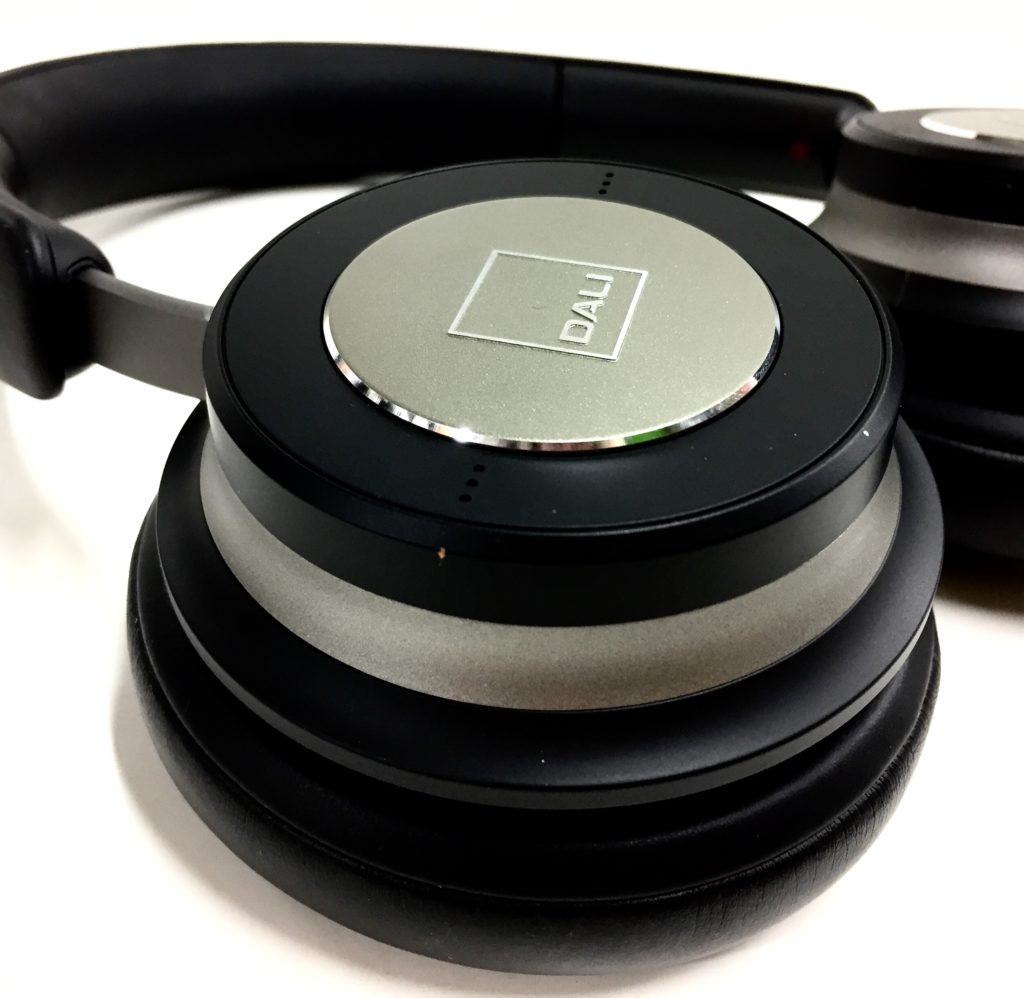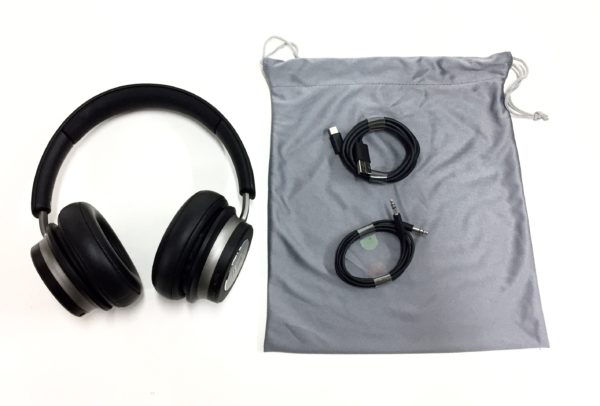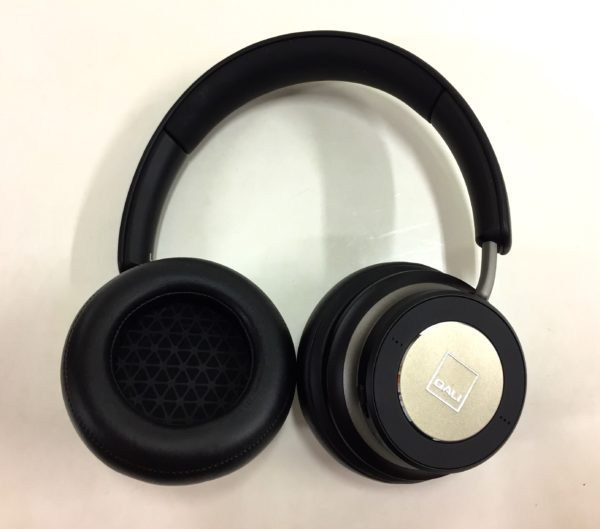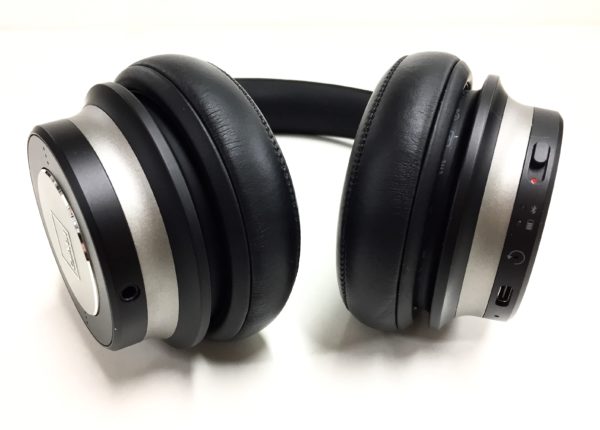Over the last week, we’ve gotten two new headphones from Dali Speakers in the offices here at Headphone Dungeon. Yesterday, I reviewed the more expensive of these two offerings, the $499 iO-6, and today I return to review its slightly less-expensive sibling, the $399 Dali iO-4. While this headphone doesn’t come with the nice case and active noise-cancellation (ANC) technology offered by the iO-6, it shares both its pedigree and its very interesting paper-fiber drivers.
I liked the iO-6, and I recommend it now. Do I feel the same way about the iO-4, though? Hmmmm, I don’t know, let’s see…
IN the BOX
- headphones
- USB-C to USB-A charging cable
- 3.5mm to 3.5mm cable for wired playing
- fabric carrying pouch
- instruction book, safety guide, etc.
BUILD and FIT
The iO-4 is a comfortable headphone, and it’s got a lot going for it in terms of build. The earcups are made of metal, and they both look stylish and feel nice to the touch. In yesterday’s review of the iO-6, I talked a bit about the interesting swivel mechanics with the earcups. That appears here too, so to recap: essentially, the earcups themselves only pivot horizontally, while the earpads pivot vertically apart from the rest of the earcup. It’s a neat touch that I really like in terms of comfort. Those earcups are sizeable and soft, and should fit ears of all sizes (at least, they fit mine).
My one problem is that the headband could be made of slightly nicer material, but it doesn’t really matter. I was slightly bothered by the headband on the iO-6, but despite having the same headband I didn’t have any comfort issues at all with the iO-4 – that just goes to show how much we’re affected by day-to-day things.
FUNCTIONALITY
While it lacks the ANC of its sibling, the iO-4 is no slouch when it comes to Bluetooth connectivity – I had no issues with my connection, and overall, everything seemed fine and dandy. The controls are intuitive and easy-to-use, although sometimes I found myself pressing the big button on the outside of the earcup (the one that’s responsible for playing, pausing and skipping tracks) by accident when handling the headphones normally.
The iO-4 has a very, very impressive battery life of 60 hours according to Dali, and I see no reason to doubt them – it seemed like I could’ve listened to these things forever without charging, and they stayed at the same battery level for pretty much the entire duration of me writing this review. Hell, you could probably take these things on a several-day vacation and use them the entire time without charging them.
SOUND
If you’ve had a history of owning ANC headphones, you probably know that in most cases the sound changes pretty significantly when you turn ANC on. The same was true of the iO-6. Since the iO-4 has no noise cancellation, though, it really just sounds like the iO-6 with noise cancellation turned off.
This leads me to conclude that the two headphones are probably using exactly the same driver. Essentially, I believe that the iO-4 is fully capable of producing the exact same sound signature as the iO-6… it just doesn’t. What a shame! I do prefer the sound of the iO-6 over the sound of the iO-4 by a pretty significant margin. But let’s get further into it.
BASS
The iO-4 is a bass-light headphone. The bass is tight enough, but it doesn’t extend super well, and it doesn’t hit super hard. Actually, I find the bass rather anemic – it has a sort of soft edge to it that prevents it from hitting hard even in bass-heavy tracks. I’m not a basshead, but I was left a little wanting here. Of course, the iO-6 has much better bass, indicating that the drivers should be capable here, and indeed when I boosted the bass significantly via EQ, it started to respond a bit more, but it still lacked some tightness.
MIDS
Though the “ideal frequency response” is something that’s still up for debate (in the extreme), some like to think of the midrange as having two parts: “body” and “presence.” If the lower midrange is significantly recessed, things sound like they’re lacking “body,” possessing a kind of airy and transparent sound. If the upper midrange is recessed, they sound like they’re lacking “presence,” perhaps sounding distant or fuzzy around the edges.
The iO-4’s upper midrange is somewhat recessed, meaning things have a tendency to sound a bit distant or detached. This does aid when it comes to soundstage size, but does mean things don’t sound quite natural on this headphone (but do keep in mind that most headphones don’t sound quite natural by my standards). Overall, I was a bit bothered by the iO-4’s midrange response, but some people out there will respond positively to the sort of veiled softness it brings to music.
TREBLE
The treble of the iO-4 possesses a sort of soft character to it, in fitting with the rest of its sound signature. While it’s not the most resolving treble of all time, does manage to bring out details like the grain of voices and the plucking of guitar strings. Overall, I’d call this treble reasonably capable for a $399 closed-back over-ear headphone – not bad at all, and not sibilant to my ears. Perhaps the extension could be a bit better, or the frequency response could be a bit more even, but overall, not bad.
SOUNDSTAGE
I wasn’t terribly impressed with the iO-4’s soundstage and imaging – it’s not flat, exactly, with some depth to it, but it’s not natural either. Instead, it takes the form of the typical “3-blob” soundstage, where the center image is somewhat separated from the image on either sides. The thin sound of the iO-4 does inject some space into the mix, but I could do with a little more.
PROS and CONS
Pros: good comfort; thin, relaxed sound
Cons: lacking in clarity and focus; very bass-light
IN CONCLUSION
I think Dali Speakers is making some good new products here with their “audiophile-oriented” Bluetooth headphones. The iO-4 certainly has an interesting way of presenting sound as a standalone pair of headphones, though it’s one that doesn’t really appeal to me.
But let me be straight with you: if you’re going to buy a pair of Dali headphones, I think it makes a lot more sense to get the $499 iO-6 over the $399 iO-4. Not only do you get a few additional features, you also get the best of both worlds: with the ANC off, you get the thin but relaxed sound signature of the iO-4 (they really are the exact same!), and with the ANC on, you get a more neutral, harder-hitting, and overall better (in my opinion) sound. In other words, don’t skimp out here – the iO-6 really does provide a significantly more complete package.




